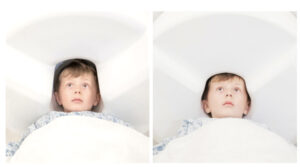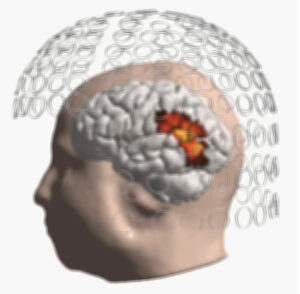Compumedics achieves world-first brain imaging breakthrough
Compumedics Neuroscan Orion LifeSpan magnetoencephalography (MEG) system records brain activity in children and adults in world-first for the cutting-edge tech.

Stockhead
Don't miss out on the headlines from Stockhead. Followed categories will be added to My News.
Compumedics Neuroscan Orion LifeSpan magnetoencephalography system records brain activity in children
First time a single magnetoencephalography system has delivered high quality scans from both children and adults
Breakthrough at world’s most advanced MEG lab at Tianjin Normal University in China
Special Report: Compumedics has achieved a world-first breakthrough with its trademarked Neuroscan Orion LifeSpan magnetoencephalography (MEG) system – years in the making and with potential to transform surgery for brain function disorders, particularly epilepsy.
Compumedics (ASX:CMP), in collaboration with Beijing Fistar – the company’s long-term Chinese distributor for its brain research technology – and Tianjin Normal University (TJNU), has recorded brain activity in children using its Orion LifeSpan MEG system.
Founder and executive chairman Dr David Burton said it marked the first time a single MEG system had delivered high-quality scans for both children and adults.
Burton said the breakthrough was at the world’s most advanced MEG lab at TJNU, which is equipped with a Compumedics Orion LifeSpan MEG system.
“Compumedics has invested nearly a decade and many millions of dollars to develop the Neuroscan Orion LifeSpan MEG,” he said.
“The system represents a major leap in magnetoencephalography, with dual-helmet capability for paediatric and adult brain scanning, fully integrated with our gold-standard brain analytics CURRY software.
“It’s incredibly rewarding to see these efforts translating into strong initial sales, global interest and the potential for improved brain health, among both children and adults worldwide.”
Furthering its gold standard for brain analytics
MEG is a functional neuroimaging technique for mapping brain activity with highly sensitive detectors to record the naturally occurring magnetic fields produced by electrical current flows within the brain.
Compumedics has established a gold standard with its trademarked CURRY software, which Burton said had been used for decades at many MEG labs worldwide.
The CURRY software has a complete set of tools for efficient electroencephalography (EEG), magnetoencephalography(MEG) and event-related potential(ERP) recording, review and multi-modal integration.
“Compumedics now has the CURRY analytics software and MEG hardware fully integrated for seamless operations for the first time,” Burton said.
He said at the heart of Neuroscan Orion LifeSpan were patented and exclusive double relaxation oscillation superconducting quantum interference devices (DROS SQUIDs), offering unparalleled accuracy compared to conventional MEG sensors.
A special vacuum cooling system boosts sensitivity, while a virtually 100% helium recycling system means it can run continuously without needing refills, enabling 24/7 operation.
Ability to accurately scan both children and adults
But among the key functions of the Neuroscan Orion LifeSpan MEG device is its unique dual-helmet design that allows accurate brain measurements for both adults and children – even at the same time (known as hyperscanning).
Compumedics’ head of Orion global business Gordon Haid said a key principle of MEG was that because magnetic fields drop off very rapidly with distance, the sensors should be as close as possible to the sources of the brain signals.
“Since the sensors must be within a rigid helmet shape, a child’s small head in an adult size helmet results in sensors far from the brain,” he said.
“This leads to small signals and a poor signal-to-noise ratio (SNR).”
Haid said a dedicated smaller helmet yields clearer and more accurate data for better research understanding and improved patient outcomes.

Child in an adult sized MEG helmet (left) and in a helmet optimised for paediatric measurements (right). Pic: Compumedics
Achieving where others fall short
Haid said because many research and clinical MEG measurements must be done with children, most importantly for paediatric epilepsy diagnostics, several manufacturers have in the past produced systems with a paediatric optimised helmet.
“However, doubling the cost and space requirements to have a second system installed has made these types of systems a rarity,” he said.
For this reason, Compumedics, along with its technology partners at the Korea Research Institute of Standards and Science (KRISS), developed the unique Orion LifeSpan MEG with dual-sensing helmets.
“The system can be installed so that it rotates and fits within a standard-sized magnetically shielded room,” Haid said.

Orion LifeSpan MEG in adult measurement position (left), being rotated (centre) and in paediatric measurement position (right). Pic: Compumedics
‘Most advanced MEG capability anywhere in the world’
Professor Xuejun Bai is vice-president of TJNU, Head of the MEG Laboratory, Director of the Brain Functional Imaging Centre, and former Director of the Chinese Psychological Society.
“The Orion LifeSpan MEG recently installed by Compumedics at TJNU has been a revolution in our ability to study mental processes of both children and adults, or even the two simultaneously,” Bai said.
“The system has already proven itself to be extremely sensitive, accurate and reliable.
“My team have been hard at work doing MEG measurements, analysing the resulting data and uncovering new neuroscientific findings.
“I can say without reservation that the Orion LifeSpan has given TJNU the most advanced MEG capability anywhere in the world.”
Ability to transform surgery
Burton said the additional MEG brain function information, combined with traditional anatomical scanning such as MRI, provides an enhanced degree of accuracy and precision for critical brain surgeries, such as those related to epilepsy.
“By way of referencing the MEG brain function information, surgeons can help prevent damaging healthy brain material during complex surgical procedures,” Burton added.
“For example, the MEG brain function scans can help to identify critical brain control, sensory processing and other brain functional regions which are so important to avoid during delicate surgical intervention.
“This is particularly important in paediatric patients undergoing surgery, where identifying the small extent of the epileptogenic areas related to seizures can be critical to the child’s outcome.”

Brain activity (yellow/orange) from MEG sensors (circles) overlaid on MRI (grey). Data from Orion LifeSpan, processed with CURRY. Pic: Compumedics
Attracting strong commercial interest
Burton said Compumedics was firmly establishing itself as the dominant supplier of MEG technology in the Chinese neurosciences market.
The company has sold MEG systems to four prestigious universities in China in the first 18 months of its commercialisation to the value of ~$20 million.
The company recently announced it had received a new order from Hangzhou Normal University (HZNU) in China.
This follows a successful installation at TJNU and further orders from Tsinghua and Tianjin Universities.
“The take-up has proven quite extraordinary, especially given the strong barriers to entry,” Burton said.
Compumedics plans to expand into the North American market in 2025 and already has US Food and Drug Administration (FDA) certification.
Known for its tech
Compumedics is well known for firsts in its technology and is highly regarded globally for its sleep-monitoring technology.
The company designed and installed the first Australian, fully computerised sleep clinic at the Epworth Hospital in Melbourne in 1987, the year it was founded.
Following early success, Compumedics went on to focus on development of products that sold into the burgeoning international sleep clinic and home monitoring of sleep markets.
Compumedics listed on the ASX in 2000 and has clients for its sleep-monitoring products in prestigious sleep centres globally.
It has counted NASA as a customer, winning two contracts for its first ambulatory sleep monitors for the organisation’s space shuttle and space station programs.
The company also won a contract to equip the largest sleep study of its kind with about 14,000 patients.
“Whilst the company has celebrated many great achievements in the past, the brain is an incredibly complex organ, and this project has certainly been one of our most challenging,” Burton said.
“We’re exceptionally proud of our achievements with the CURRY software and Neuroscan Orion LifeSpan MEG technology and what it represents as a major leap forward in understanding and treating the human brain.”
This article was developed in collaboration with Compumedics, a Stockhead advertiser at the time of publishing.
This article does not constitute financial product advice. You should consider obtaining independent advice before making any financial decisions.
Originally published as Compumedics achieves world-first brain imaging breakthrough






